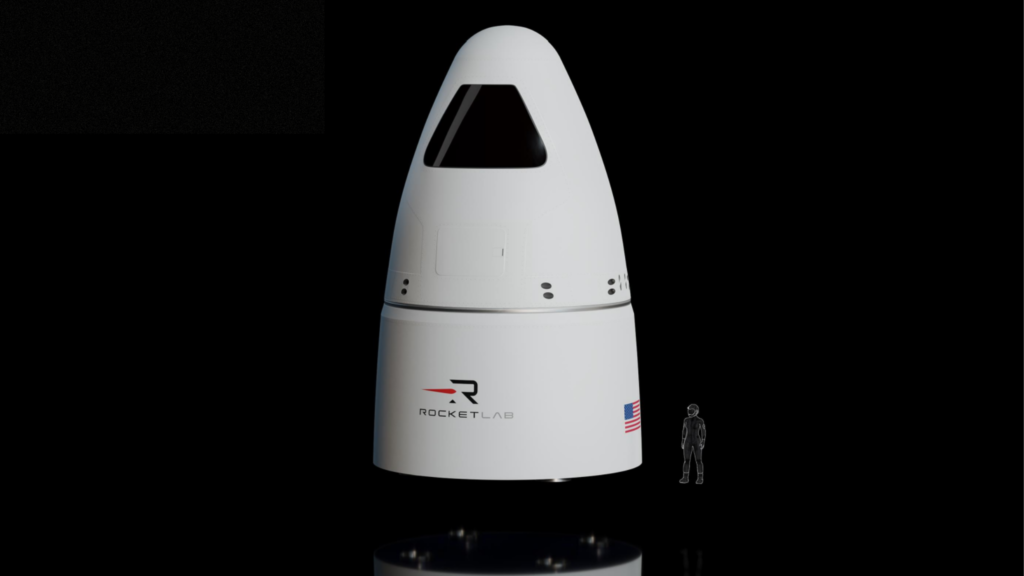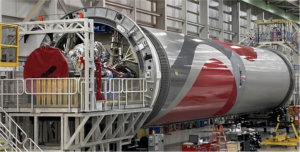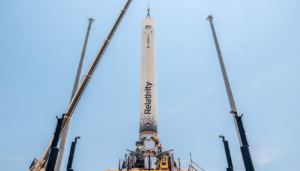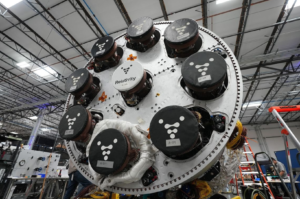
Rocket Lab Just Revealed A Bunch Of New Neutron Information
Rocket Lab has been working to increase what they offer within the space industry in a significant way. This not only involves space systems but also launch services with exciting projects like Electron partial reusability and Neutron. Not long ago the company revealed this ambitious new rocket and gave us some initial information.
However, just yesterday during Rocket Lab’s Investor Day, the company revealed much more about the next generation launch vehicle. This included a possible crewed variant, a closer look at the Archimedes engines, current progress on the launch vehicle structure, and much more. All of which gives us a better idea of some of the changes they are making, why, and how it affects the future of the company.
If successful, Neutron could change how Rocket Lab accesses space and even shift the company toward human flights if they see fit. Based on a few graphics and new information provided last night, the company has been working in overdrive to make this project a reality. Here I will go more in-depth into the current progress on Neutron, all the big updates from yesterday’s Investor Day, what to expect in the future, and more.
Structure, Design Change, & More

Yesterday on the 21st, CEO of Rocket Lab Peter Beck, along with other members of the executive team, provided an update on the company with a big focus on the Neutron program. While a lot of interesting information was presented, here I will focus on everything Neutron related. Peter Beck began by going over the structure of Neutron and the progress they were making. The first image shown was half of a first stage section of the tank made of carbon composites. The employee inside helps put in perspective the size of this launch vehicle. Peter Beck highlighted the first tanks are expected to be done by the end of this year. He went on to talk about the difficulty of creating the molds and these initial tanks for Neutron. Specifically, tooling and molds are the complex, time-consuming part requiring extensive design work and refinement. With these now done, the first hardware has been delivered with more in production at pace.
In addition, Rocket Lab is by no means new to 3D printing rocket components and even engines. They point out that they’re experts at 3D-printing rocket engines and know how to scale. Full scale parts come through their production lines using in-house 3D-printing machines. They also own some of the largest 3D printers in the world, being put to work for Neutron. This brings us to a host of changes that were announced during this presentation. He first clarified that Neutron has a payload capacity ranging from 8 to 15 tons depending on the mission profile. For example, 8 tons to LEO when Neutron returns to the pad, 13 tons when Neutron lands down range, and 15 tons when expendable. The next change had to do with the fairings. The original design featured four separate fairing pieces that come together with a hungry hippo design. The updated fairing uses only two sections rather than four, while keeping the same hungry hippo closing pattern but also simplifying the overall design. Specifically, the fairing remains attached to the first stage, opening to deploy the second stage and payload within. The point of this is to eliminate the high cost of expending or capturing and reusing fairings. The downgrade reduces the amount of angle the fairing must open and enables more robust fairing panels.
From here, Peter Beck went over the design of Neutron. In this case, the first stage has a tapered profile and aerodynamic control surfaces, including canards and landing legs that act as rear-lifting surfaces. This allows the first stage to glide back to Earth for landing, reducing the aerothermal load experienced by modern re-entry boosters. The next slides were especially exciting as they showed two different renders of what a human-rated Neutron rocket would look like. Peter Beck made it clear that this was not an announcement but rather the fact that the vehicle is designed to be human ratable. However, as of right now, they don’t have any programs working on Neutron capsules, but they are looking into it. Next, we received more information on the second stage. Designed to maximize mass-to-orbit capability, orbital insertion accuracy, and performance for complex payload deployments. Trying to provide an easily accessible and condensed mounting location for avionics hardware, aerodynamic control devices, and fluids lines. It also minimizes the requirement for the second stage to withstand the external launch environment.
Moving back to the structure of the rocket, the presentation included an interesting video of a large robot layering the structure of Neutron. Peter Beck highlighted that if done right, carbon composite like the one they are using can be very cost effective and strong by utilizing technology and strategies that the aerospace industry uses. Here, complete tanks are manufactured in days with minimal human labor and less material and waste than metallics.
Engine Changes & Launch Site

The final big change to the general structure, had to do with the engines. Instead of just 7 Archimedes engines on the first stage, there will now be 9, for a total of 10 engines on the rocket including the second stage. Not only did the number of engines change, but they announced a lot more detail on this engine and its future. Starting with new stats, the vacuum engine featured an ISP of 329 seconds, and the sea level ISP was 367 seconds. The ISP is the specific impulse and a good way to determine the efficiency of a rocket engine. Peter Beck explained that they are trying to make the most reliable and reusable engine which is the reason for the slightly lower isp, however still impressive. He stressed that this engine is going to be reused again and again and the less stress it goes through the better. They then announced the change from a gas generator cycle to oxidizer rich closed cycle because as they worked through the content of operations and did all the power balances, they found turbine temperatures that were too high, a low amount of margin, and the need for a lot of compromises. Specifically, the oxidizer rich closed cycle provides a higher specific impulse than gas generator, open expander, or tap-off cycles, without the thrust limits or added complexity. Gas generator cycles are limited in capability and not suited to the deep throttling required for multiple re-lights in orbit, and for landing the first stage. ORSC engines operate at relatively low temperatures and pressures, eliminating the stress and thermal strain experienced by gas generator engines. This improves engine life and reusability, while leaving headroom to increase performance.
In other big news, they announced they had selected the NASA Stennis Space Centre’s A-3 Test Complex to test Archimedes engines. This contract includes exclusive use of land within a 1 million square foot area for 10 years, with the option to sign for an additional 10 years. Here they are leveraging existing infrastructure and site-wide Services, enabling rapid stand up of their test facility in the order of months, not years. This will help them continually test and improve Neutron’s engine as they go through the development process.
Lastly, they pointed out the current progress on Neutron’s facility in Virginia, and some of their ambitious ideas for the future. As of right now, concrete is being poured for the massive facility and launch pads with the goal of standing up the first Neutron Production Complex building before the end of the year. This site also serves as a development area for tank testing, enabling rapid build & test iteration. They also went over a render of what the future launch complex could look like. This included a static launch mount surrounded by propellant farms and fluid storage. Not to mention the addition of sea walls that go out and connect to an ocean landing platform. The big structure is what they call the rollover structure, meant to slide over the rocket for stacking and moving operations. Meant to operate all year round through adverse conditions. And in this case, even go all the way out to sea and bring it back to land. They then highlighted some key government partnerships including the U.S. Space Force and U.S. Transportation Command. Rocket Lab was awarded a $24.35 million contract with the U.S. Space Force’s Space Systems Command for development of Neutron’s upper stage. Rocket Lab finished the Neutron portion of the presentation by revealing that the rocket was on track and they plan to meet a large variety of different milestones by the end of 2023. All of which we can expect to see not long from now.
Conclusion
Yesterday’s Investor Day presentation was both extremely informational and exciting. Rocket Lab made it clear that Neutron was not just an idea and the company has been hard at work turning the ambitious plan into a reality. Between progress on the structure, Archimedes engine development, new test facilities, a crewed variant, and so much more, it’s clear Rocket Lab is serious about the future of this project. Not to mention a host of additional information on Electron, Photon, and so much more. We will have to wait and see how it progresses and the impact it has on the space industry.



